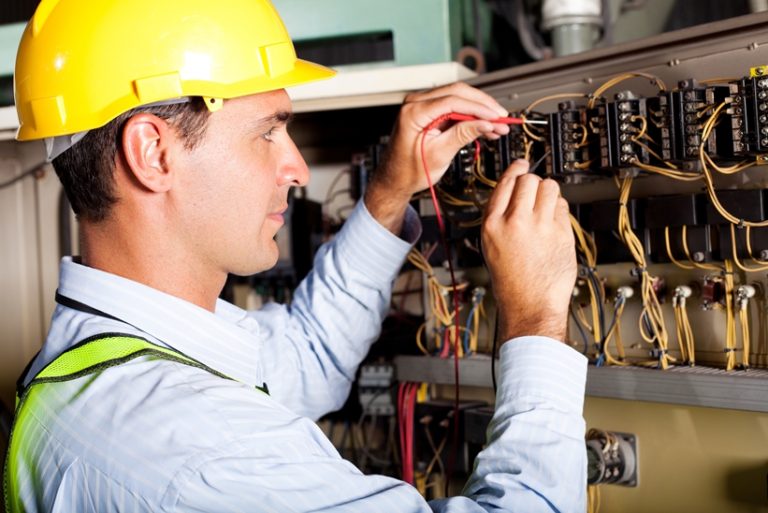Commercial mechanical ventilation systems are the unsung heroes of many buildings. They quietly ensure indoor air quality and comfort, making our spaces more habitable. But what powers these systems, making them work tirelessly day in and day out?
The answer: electrical components.
These systems heavily rely on electrical components to function effectively. While they are essential, these electrical components also bring along their own set of potential hazards. In this blog post, we’ll explore some of the electrical hazards you need to watch out for when dealing with commercial mechanical ventilation systems and how to deal with them.
Common Electrical Components in Commercial Mechanical Ventilation Systems
To understand the potential hazards, we first need to identify the key electrical components in these systems.
- Motors and Motor Controls: These are the workhorses of the system, responsible for moving air through the ventilation system. They require proper maintenance to prevent electrical issues.
- Wiring and Circuits: The electrical wiring and circuits connect all the components, ensuring they work together seamlessly. Damaged wiring can lead to disruptions and hazards.
- Control Panels and Sensors: These are the brains of the operation, monitoring and adjusting system performance. Faulty controls can result in inefficient operation and potential hazards.
Understanding Electrical Hazards
Now that we’ve identified these components let’s delve into the hazards associated with them.
- Electrical Shocks: Electrical shock can occur when exposed to live wires or faulty equipment. It can range from minor discomfort to severe injury, depending on the voltage and duration of exposure.
- Fire and Overheating Risks: Electrical fires are a significant concern. Overheating of components due to electrical faults can lead to fires, potentially causing substantial damage and risking lives.
- Short Circuits and their Consequences: Short circuits can result from damaged wiring or faulty components. They can lead to system malfunctions, power outages, and, in some cases, fires.
Safety Precautions and Best Practices
Safety should always be a priority when dealing with commercial mechanical ventilation systems.
- Proper Training and Certification for Personnel: Ensure that anyone working on these systems is adequately trained and certified. This minimizes the risk of errors and accidents.
- Regular System Inspections and Maintenance: Scheduled inspections and maintenance routines are crucial. These can identify and rectify electrical issues before they become hazards.
- Appropriate Use of Personal Protective Equipment (PPE): Those working with these systems should wear the necessary PPE, including gloves and eye protection, to minimize the risk of electrical contact.
- Lockout/Tagout Procedures: These procedures help ensure that the system is safely de-energized during maintenance or repair work, preventing accidental starts that can lead to injuries.
- Engaging Professional Electricians: When all else fails, electricians can fill in the gaps in the ventilation’s electrical needs. Professional electricians can easily navigate through your ventilation system’s circuitry even in hazardous situations.
Common Electrical Hazards Specific to Commercial Mechanical Ventilation Systems
Now, let’s take a closer look at hazards specific to these systems.
- Moisture and Corrosion Issues: Ventilation systems often encounter moisture, which can lead to corrosion of electrical components. Regular checks for moisture-related damage are crucial.
- Overloading and Voltage Fluctuations: These systems can be prone to overloading, especially during peak usage. Voltage fluctuations can also occur, causing damage to sensitive electronic components. Implementing voltage regulators and surge protectors can help mitigate these risks.
- Wear and Tear of Electrical Components: Over time, electrical components can wear out. This can lead to inefficient operation and increased risk of electrical faults. Regular component replacement as part of a maintenance routine is essential.
- Compatibility Issues with System Upgrades or Modifications: When upgrading or modifying the ventilation system, compatibility issues can arise between new and existing electrical components. It’s essential to ensure that all components work harmoniously.
Conclusion
While commercial mechanical ventilation systems play a vital role in maintaining indoor air quality and comfort, it’s essential to be aware of the electrical hazards they can pose. Understanding the common electrical components, recognizing potential hazards, and following safety precautions and best practices can ensure the safe and efficient operation of these systems. So, keep these considerations in mind when dealing with commercial mechanical ventilation systems to create a safer and more comfortable indoor space for everyone.

